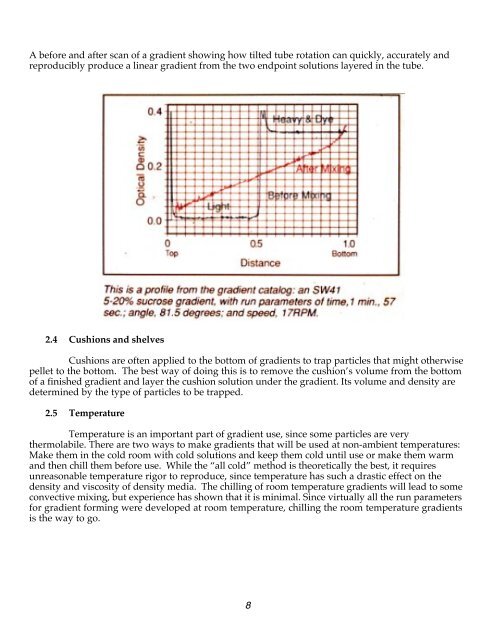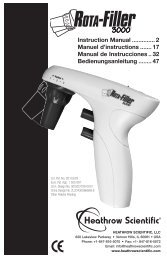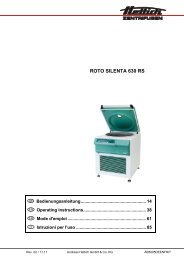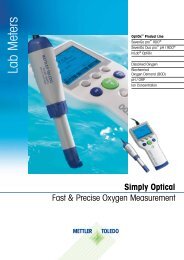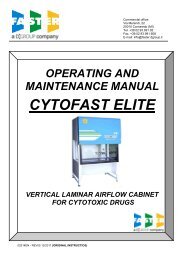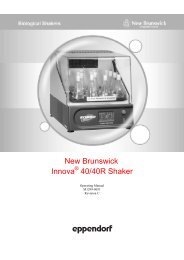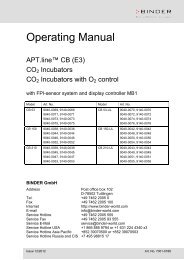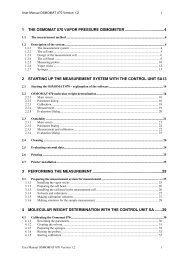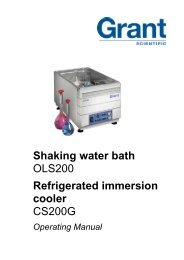Gradient Master - Wolf Laboratories
Gradient Master - Wolf Laboratories
Gradient Master - Wolf Laboratories
Create successful ePaper yourself
Turn your PDF publications into a flip-book with our unique Google optimized e-Paper software.
A before and after scan of a gradient showing how tilted tube rotation can quickly, accurately and<br />
reproducibly produce a linear gradient from the two endpoint solutions layered in the tube.<br />
2.4 Cushions and shelves<br />
Cushions are often applied to the bottom of gradients to trap particles that might otherwise<br />
pellet to the bottom. The best way of doing this is to remove the cushion’s volume from the bottom<br />
of a finished gradient and layer the cushion solution under the gradient. Its volume and density are<br />
determined by the type of particles to be trapped.<br />
2.5 Temperature<br />
Temperature is an important part of gradient use, since some particles are very<br />
thermolabile. There are two ways to make gradients that will be used at non-ambient temperatures:<br />
Make them in the cold room with cold solutions and keep them cold until use or make them warm<br />
and then chill them before use. While the “all cold” method is theoretically the best, it requires<br />
unreasonable temperature rigor to reproduce, since temperature has such a drastic effect on the<br />
density and viscosity of density media. The chilling of room temperature gradients will lead to some<br />
convective mixing, but experience has shown that it is minimal. Since virtually all the run parameters<br />
for gradient forming were developed at room temperature, chilling the room temperature gradients<br />
is the way to go.<br />
8


